
- For PC
- For MAC
- For Linux
- OS: Windows 10 (64 bit)
- Processor: Dual-Core 2.2 GHz
- Memory: 4GB
- Video Card: DirectX 11 level video card: AMD Radeon 77XX / NVIDIA GeForce GTX 660. The minimum supported resolution for the game is 720p.
- Network: Broadband Internet connection
- Hard Drive: 23.1 GB (Minimal client)
- OS: Windows 10/11 (64 bit)
- Processor: Intel Core i5 or Ryzen 5 3600 and better
- Memory: 16 GB and more
- Video Card: DirectX 11 level video card or higher and drivers: Nvidia GeForce 1060 and higher, Radeon RX 570 and higher
- Network: Broadband Internet connection
- Hard Drive: 75.9 GB (Full client)
- OS: Mac OS Big Sur 11.0 or newer
- Processor: Core i5, minimum 2.2GHz (Intel Xeon is not supported)
- Memory: 6 GB
- Video Card: Intel Iris Pro 5200 (Mac), or analog from AMD/Nvidia for Mac. Minimum supported resolution for the game is 720p with Metal support.
- Network: Broadband Internet connection
- Hard Drive: 22.1 GB (Minimal client)
- OS: Mac OS Big Sur 11.0 or newer
- Processor: Core i7 (Intel Xeon is not supported)
- Memory: 8 GB
- Video Card: Radeon Vega II or higher with Metal support.
- Network: Broadband Internet connection
- Hard Drive: 62.2 GB (Full client)
- OS: Most modern 64bit Linux distributions
- Processor: Dual-Core 2.4 GHz
- Memory: 4 GB
- Video Card: NVIDIA 660 with latest proprietary drivers (not older than 6 months) / similar AMD with latest proprietary drivers (not older than 6 months; the minimum supported resolution for the game is 720p) with Vulkan support.
- Network: Broadband Internet connection
- Hard Drive: 22.1 GB (Minimal client)
- OS: Ubuntu 20.04 64bit
- Processor: Intel Core i7
- Memory: 16 GB
- Video Card: NVIDIA 1060 with latest proprietary drivers (not older than 6 months) / similar AMD (Radeon RX 570) with latest proprietary drivers (not older than 6 months) with Vulkan support.
- Network: Broadband Internet connection
- Hard Drive: 62.2 GB (Full client)
France’s planned new post-war carrier fleets needed an equally new, but effective and reliable fighter and attack aircraft - step forward, the SO.8000 Narval, an unorthodox twin-boom, pusher-prop fighter developed specifically for carrier operations. However, despite it failing to pass prototype stage, War Thunder pilots can now look forward to harnessing the power of this unruly French avian beast in the upcoming update 1.73!
PS4 users will be able to purchase the SO.8000 Narval bundle after the release of update 1.73. The exact date will be announced at a later date.
Realising the strategic value of aircraft carriers in the Second World War, especially in the Pacific theatre, France was eager to assemble their own carrier fleet even before WW2 came to an end. Shortly after the liberation of France, Great Britain provided the French navy with one of their escort carriers, HMS Biter, which the French renamed to Dixmude. Keen to demonstrate the power of the revived French navy to the overseas colonies in the post-war period, the French soon began work on constructing their own carrier vessels. Naturally, the construction of new aircraft carriers also sparked a demand for brand new carrier-borne aircraft. The French aircraft industry, which was rebuilding itself rapidly after the war, answered the call and presented several designs to the French military in the late 1940s.
One such proposed design was the SNCASO SO.8000 Narval. Multi-role aircraft could be easily transformed into fighter, ground attacker, fast bomber, or reconnaissance planes, by adding different weapon and equipment presets. Given how the aircraft was designed in a twin-boom pusher-prop configuration, it was deemed highly unorthodox for a carrier-based aircraft design. Nevertheless, the aircraft promised excellent performance, thus French military officials gave the project a green light by ordering 2 prototypes for testing. Despite both prototypes being constructed by the end of 1948, the maiden flights had to be delayed by several months as, thanks to the complex nature of design, problems and flaws were constantly being found and fixed by SNCASO engineers. Eventually, on 1 April 1949, the Narval as it was nicknamed, took to the skies. By the end of 1949, the Narval was ready to be passed for official military testing. These tests showed that the Narval, despite superb performance, wasn’t very suitable for carrier operations. The overall difficult handling, as well as limited cockpit visibility on take-off and landing procedures, made it very difficult for even experienced pilots to operate the aircraft effectively. Expectedly, after failing testing, the French military very quickly lost faith in the design. Ironically though, several years later, in the early 1950s, France purchased a number of Sea Venoms, which featured a similar design concept to the SO.8000, from Great Britain for use on their carriers.
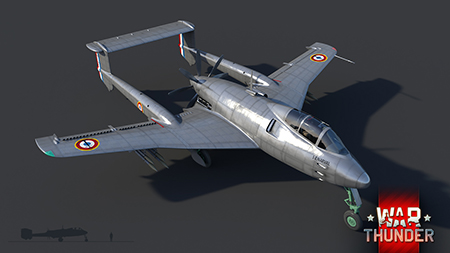 |
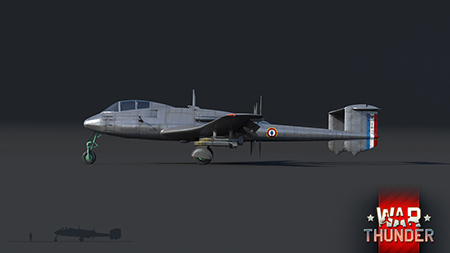 |
In War Thunder, the Narval will be one of the first representatives of the upcoming French nation in the game, as a premium vehicle of the fourth rank. It doesn’t take an expert’s eye to tell that the Narval was built with speed and performance in mind. If at first glance you assumed this aircraft is fast, then you’re absolutely correct! Being able to surpass speeds well over 700 km/h in level flight, the Narval will be more than capable to hold its ground against various rivals it will meet in high ranked battles. However, it’s not just the fast, streamlined looks that allow the Narval to reach such high speeds - that’s mostly what the engine is responsible for. The Arsenal 12H, a French adaptation and further development of the German Jumo 213A engine, is able to produce an impressive 2,300 horsepower with war emergency power engaged. Though this may seem like a lot, make no mistake, the Narval, with its average take-off weight of around 6.5 tonnes, is no light aircraft, thus it needs every bit of power it can get in order to fulfill its designated combat role.
Download wallpaper: 1280x1024 | 1920x1080 | 2560x1440
Speaking of combat roles, the Narval was intended to perform several, ranging from classic fighter duties all the way to scouting and ground support. To achieve this, the Narval is equipped with a standard primary load-out of six 20 mm cannons, situated in the front fuselage, below the cockpit. This arrangement helps to minimise issues relating to horizontal bullet spread, and thanks to this, performing deflection shots at high speeds will only be a matter of the pilot’s individual skill. To complement the ferocious primary armaments during a ground attack mission, the Narval can be equipped with a pair of large calibre bombs or several unguided rockets. This allows the aircraft to directly influence the outcome of combined battles as well, by presenting itself as a force to be reckoned with, even for unsuspecting tankers on the ground.
France is joining the fight with the next major update for War Thunder, and the SO.8000 Narval will be just one of her many interesting machines of war coming to the game very soon. Until then!
Follow our devblog to find out more about new additions to War Thunder in Update 1.73:
The War Thunder Team
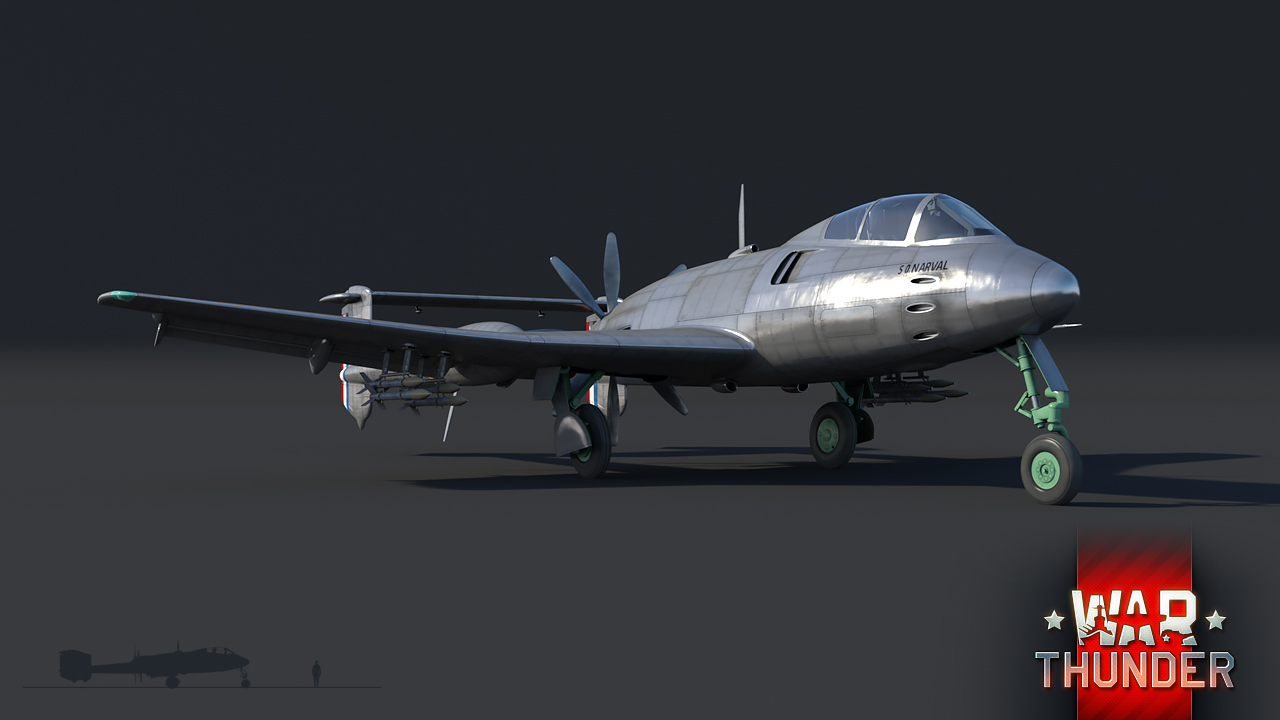
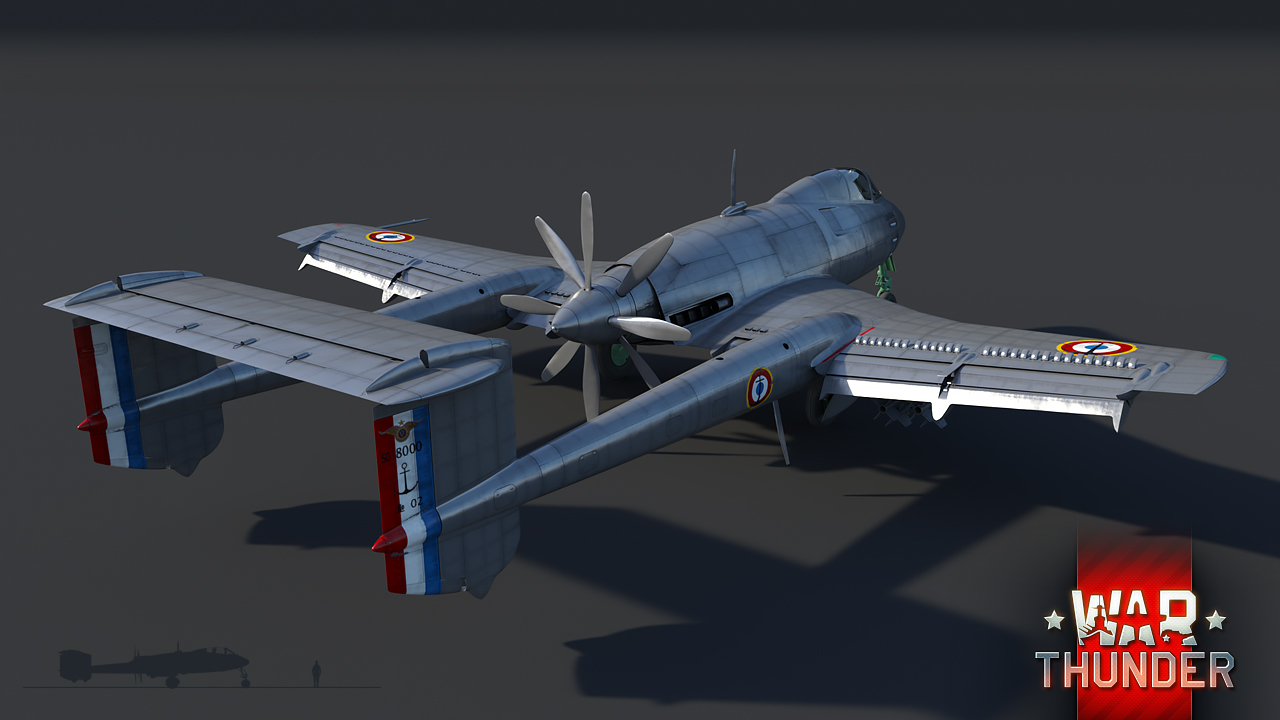
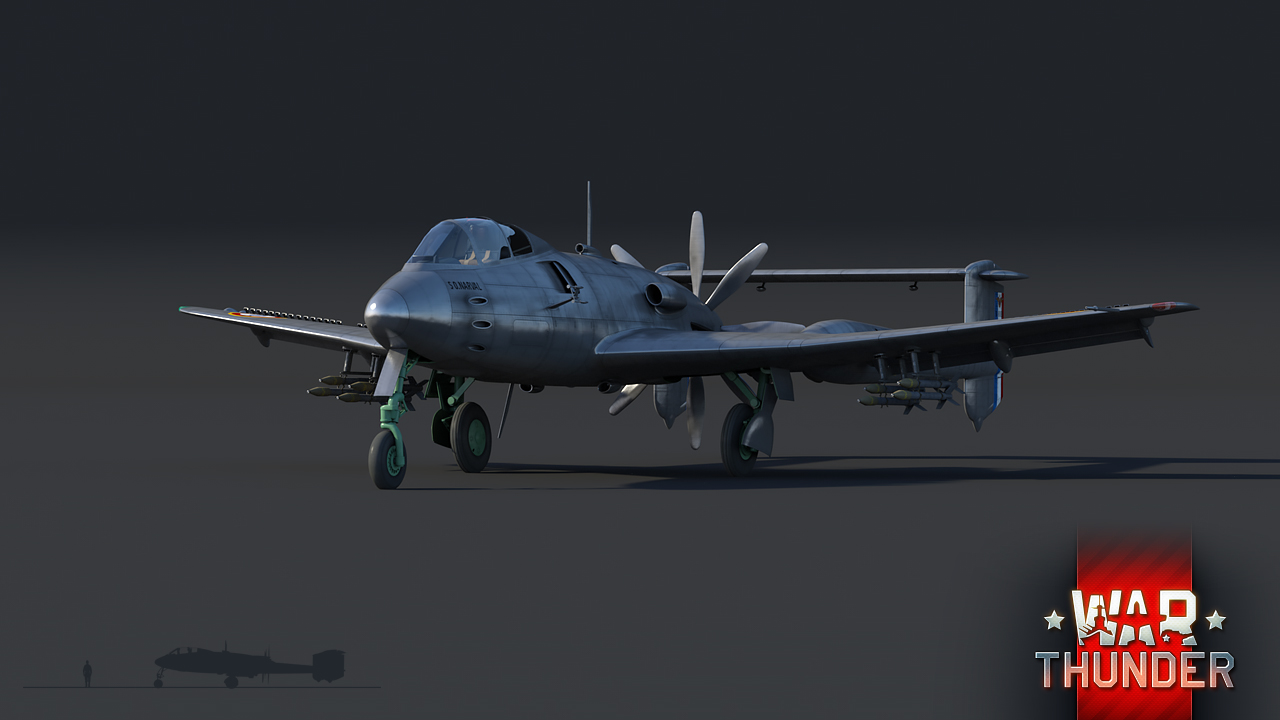




Comments (1)
First
Submit a complaint